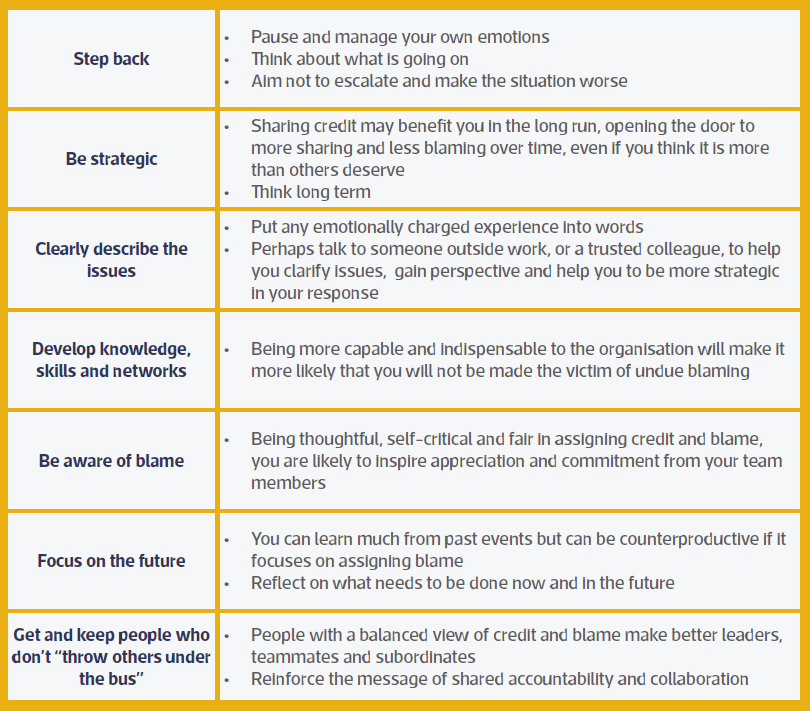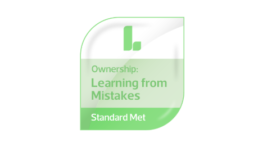“Learning from mistakes is about understanding what you did wrong and making sure that you do not do it again.” (Dattner, 2012).
Failure is emotionally charged, and getting an organisation to accept failure takes good leadership. Most leaders want to help their organisations learn from their mistakes to improve future performance. The challenge, however, is to make it safe for people to admit and report errors and mistakes, and for leaders to deal positively and optimistically with them at the same time as keeping up high standards of performance.
You need to make sure that team members understand the goal is to learn. Work towards reducing the shame of failure in your team. Never show anger or strong disapproval of what may at first appear to be incompetence. Use the best individual approach to solving every mistake or error so that it does not happen again. (Fast, 2010).
Some failure is inevitable in the modern, complex fast-moving workplace.
Constructive Feedback
Good team members need and want to know how they are doing. Giving constructive feedback informs them of "what they need to do to learn from their mistakes or errors and achieve their goals." (Bregman, 2015).
Constructive feedback:
- Identifies the gap that exists between expectations and achievements
- Shows that you care about your team members’ professional development
- Helps you ensure they understand what they need to do
- Gives you the opportunity to listen to them and agree on effective next steps together

Giving constructive feedback and providing meaningful praise is one of the most important parts of your leadership role. Doing it well can ensure a problem solving culture in which your team members feel able to offer ideas, highlight issues, offer suggestions, raise problems, and learn from mistakes. This contrasts with a blame culture.
Experiential learning
Experiential learning means learning from your experience. You acquire new skills and expertise by doing things and reflecting on what you have done.

Blame cultures
A blame culture is one in which people are blamed for mistakes. This leads to an unwillingness to take risks or to accept responsibility for mistakes due to a fear of being blamed, criticised or even prosecuted.
Research by Fast and Tiedens ( 2010 ) showed that when people blame others for their mistakes, they learn less and perform worse. Dattner ( 2012 ) explains that ‘How you are credited and blamed — and how you as a leader deal with the dynamics of credit and blame around you – has enormous impact on the quality of your work and influences whether you learn and grow in your career or stop developing’.
Blame is ‘socially contagious’; that is, when a team member is seen to blame someone else, this increases the likelihood that the observer then goes on to blame another for their own, completely unrelated, mistakes or failures. Blame contagion was removed when people were acknowledged, appreciated or credited (Fast and Tiedens, 2010 ).
A good way of detecting a blame culture is to think about what happens when a leader detects a mistake. If they ask ‘Who’ (rather than ‘What’ or ‘How’) this may be evidence of a blame culture. A blame culture contrasts with a culture in which mistakes are owned, the problem leading to a mistake is identified and improvements made, and people learn from the experience.
Dattner ( 2012 ) offers some approaches that may help you to minimise a culture of blame:


References
Bregman, P. (2015). Four Seconds: All the Time You Need to Replace Counter-Productive Habits with Ones That Really Work Publ. Harper Collins
Dattner, B. (2012). Credit and Blame at Work: How Better Assessment Can Improve Individual, Team and Organizational Success Publ. Free Press, N.Y, USA
Fast, N. J (2010). How to Stop the Blame Game Harvard Business Review. Issue dated 13th May. retrieved from https://hbr.org/2010/05/how-to-stop-the-blame-game
Fast, N. J. and Tiedens, L.Z. (2010). Blame contagion: The automatic transmission of self-serving attributions J. Exp Soc. Psych. 46, 97-106.
Hayward, S. (2018). The Agile Leader Kogan Page Limited
Staver, M. (2012). Leadership Isn’t for Cowards: How to Drive Performance by Challenging People and Confronting Problems Publ. John Wiley & Sons Inc., NJ, USA
How well do you learn from mistakes? Test yourself with our Scorecard.
If you’re a member, you can test yourself on Learning from Mistakes and see if you meet the standard.
Spotlights
Further Resources
From the blog










